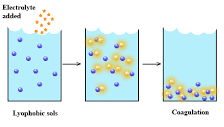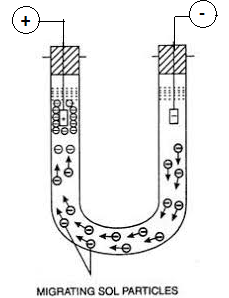Science > Chemistry > Colloids > Coagulation of Colloidal Solution The process of precipitation of colloidal particles due to aggregation of the particles is called coagulation or flocculation. Explanation: The presence of the same type of electric charge on colloidal particles causes repulsion and keep them in a suspended state. If by some means, the […]
Categories
Coagulation of Colloidal Solution
- Post author By Hemant More
- Post date April 20, 2020
- 1 Comment on Coagulation of Colloidal Solution

- Tags Ageing of colloids, Charge on colloidal particles, Chemistry, Coagulation, Coagulation by electrolytes, Coagulation by electrophoresis, Coagulation by heating, Coagulation by persistent dialysis, Colloidal dispersions, Colloidal solution, Colloidal state, Colloids, Crystalloids, Dispersed phase, Dispersion medium, Floculation value, Hardy Shulze rule, Meteral coagulation, Mutual coagulation, Protective colloids, Solution, Suspension, True solution


